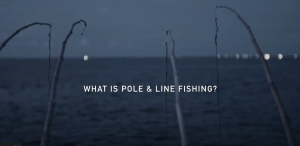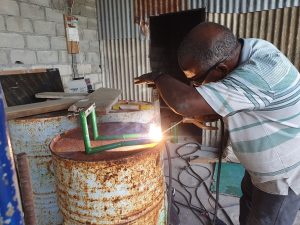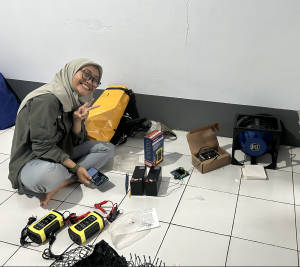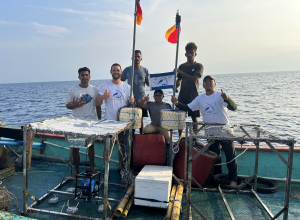At IPNLF, we’re excited to share our latest exploration into sustainable fishing practices, supported by DEFRA’s Darwin Innovation Initiative. This experimental project is taking a new approach to pole-and-line fishing — widely regarded as one of the most sustainable fishing methods due to its minimal bycatch and reduced environmental impact.
 This one-fish-at-a-time technique uses a single hook and line to target skipjack tuna, a highly valued species. Traditional pole-and-line operations often rely on “chumming” to attract tuna schools, where fishers scatter live bait into the water to bring tuna close to the boat and stimulate a feeding frenzy. However, sourcing and using live bait poses challenges, from ecological impacts to operational costs, and emissions. Our experiments aim to innovate, looking for viable alternatives to live bait that could revolutionise pole-and-line fishing and, ultimately, the tuna industry.
This one-fish-at-a-time technique uses a single hook and line to target skipjack tuna, a highly valued species. Traditional pole-and-line operations often rely on “chumming” to attract tuna schools, where fishers scatter live bait into the water to bring tuna close to the boat and stimulate a feeding frenzy. However, sourcing and using live bait poses challenges, from ecological impacts to operational costs, and emissions. Our experiments aim to innovate, looking for viable alternatives to live bait that could revolutionise pole-and-line fishing and, ultimately, the tuna industry.
Phase One: Baseline Data and Equipment Design 
Our journey began with baseline data collection to understand skipjack tuna behaviour during typical pole-and-line fishing operations. We developed a custom underwater camera rig that captured footage of tuna reacting to live bait. This initial step allowed for observing the impact of visual and auditory cues during chumming, giving us insights into tuna’s sensory triggers. One challenge was engineering a rig sturdy enough to withstand the forces from the powerful engine pushing through the water. With several design iterations, we finally created a rig that could be quickly deployed and retrieved, making it adaptable to active fishing operations.
Experimental Phase: Testing New Stimuli


 To test alternatives to live bait, we designed an experimental rig featuring programmable LED lights, an underwater speaker, and olfactory cues from fish byproducts. We hypothesised that these sensory stimuli could attract tuna, excite them into a feeding frenzy, and keep them close to the vessel without using live bait. We paired this experimental rig with an identical control rig that excluded the lights, sounds, and olfactory cues, ensuring scientific rigour by comparing tuna response across treatments.
To test alternatives to live bait, we designed an experimental rig featuring programmable LED lights, an underwater speaker, and olfactory cues from fish byproducts. We hypothesised that these sensory stimuli could attract tuna, excite them into a feeding frenzy, and keep them close to the vessel without using live bait. We paired this experimental rig with an identical control rig that excluded the lights, sounds, and olfactory cues, ensuring scientific rigour by comparing tuna response across treatments.
Challenges and Controlled Environment Testing
The ocean is a highly dynamic testing ground, and identifying the perfect combination of stimuli proved challenging. Limited visibility and brief tuna sightings often made it difficult to determine whether a lack of tuna response was due to our experimental setup or simply because fish were absent in the area. Additional controlled settings could help refine our approach, so we are partnering with the Indonesian Ministry of Marine Affairs and Fisheries (MMAF) to conduct trials in aquaculture cages.
Looking Ahead
If successful, these innovations could significantly reduce the use of live bait in pole-and-line fisheries, cutting operational costs, minimising ecological impact, and further advancing the sustainability of this traditionally responsible way of catching tuna. IPNLF is committed to sharing our findings and lessons learned, so other organisations and researchers can replicate and build on this work. Stay tuned as we refine our approach and share insights from these groundbreaking trials. Each step in this experimental journey moves us closer to a more sustainable future for pole-and-line fisheries worldwide.
